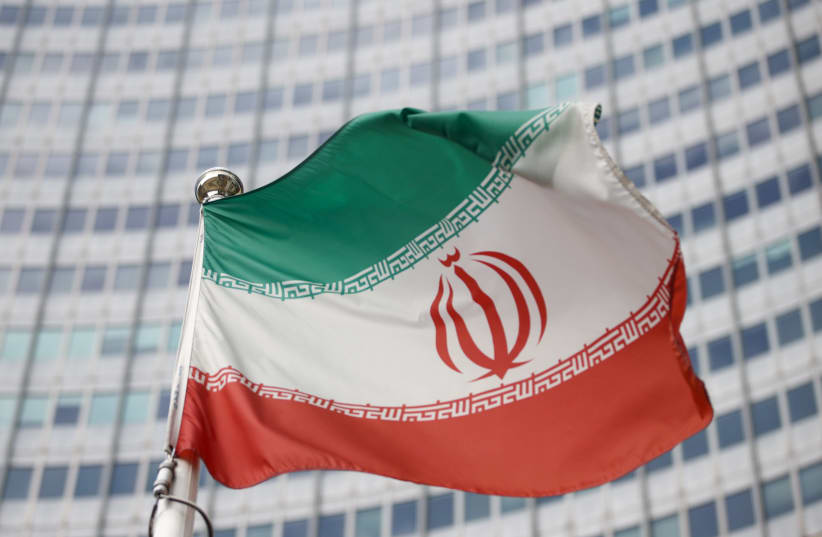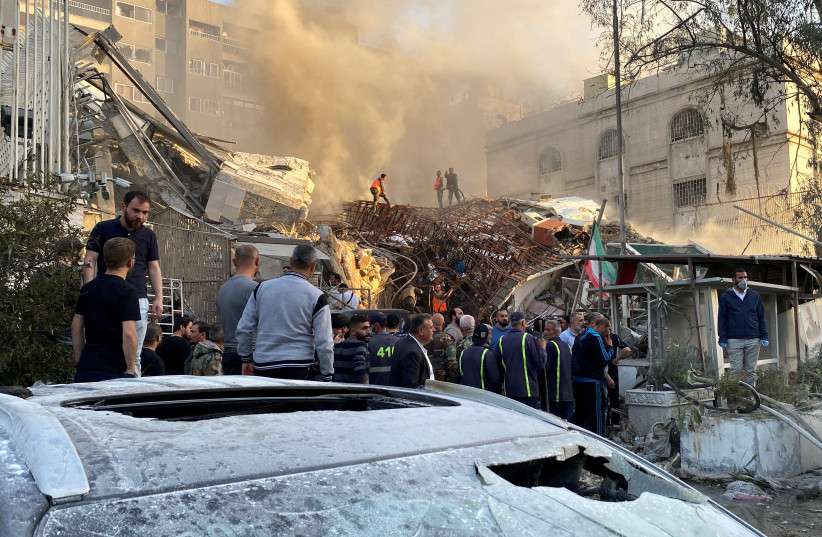Iran may be recalculating its role in Syria, a recent report at Agence France-Presse has suggested.
The report should be read with skepticism because Iran and its proxies, as well as allies of the Syrian regime such as Russia, have spread these rumors in the past.
According to the report, a “series of strikes targeting its commanders in recent months has prompted a reshaping of its presence, the sources said.” The source, which is close to Hezbollah, claims that “Iran withdrew its forces from southern Syria.” It asserts Iran left areas near the Golan and in Dara’a province, as the UAE-based Al-Ain media suggests.
The UK-based war monitor, the Syrian Observatory for Human Rights, “said Iranian forces had withdrawn from Damascus and southern Syria,” the report notes. Yet the report then claims that other pro-Iran militias took the place of the Iranians.
This reminds me of a cup game, where people at a carnival fairground or in a seedy part of town put money in a cup and ask you to guess which cup it is in as they move the cups around.
The report says that “as many as 3,000 Iranian military personnel are present in Syria, supported by tens of thousands of Iranian-trained fighters from countries including Lebanon, Iraq and Afghanistan.”
The fact is that these kinds of reports have been floated in the past with claims that Iran had reduced the number of its personnel from 1,200 to 800. These reports date back to 2018, when ISIS was largely defeated in Syria, and the Syrian regime, backed by Russia and Iran, had defeated most of the Syrian rebels.
In those days, Iran, Russia, and Turkey were working closely together to formulate a post-civil war policy in Syria.
Today, the stories about Iran withdrawing personnel from some areas are designed to make it seem like Israel’s opposition to Iranian entrenchment in Syria is working. Iran blamed Israel for an attack on a building next to the Iranian consulate in Damascus in early April. Iran then attacked Israel on April 13-14, and Israel responded several days later.
Iran's recent calculations in Syria
Al-Ain media in the Gulf correctly asks about these new reports and whether this is a “tactic” or “recalculation.”
The report reveals some interesting details about Iran’s recent calculations in Syria. It says that Iran was holding meetings in its consulate in Damascus, thinking the meetings were safe. Iran actually used a building near the consulate.
Stories about Iran’s movements in Syria are not new.
The Islamic regime often changes the locations of its personnel in Syria. For instance, Iran constructed a base near Albukamal in Syria near the Iraqi border in 2018 and 2019, but then it reduced its presence there.
Back in 2020, The National in the UAE reported how Iran used a large 180-room building in Syria called the “glass house.”
“Thousands of cars pass a towering glass building along Damascus’ airport road every day with little idea of its crucial role in the country’s brutal nine-year civil war.
Just a few hundred meters from the country’s main passenger terminal—one of the few routes to the outside world for those in isolated Syria able to afford it—the building’s imposing glass facade casts a shadow across the highway traffic. Inside is one of the Islamic Revolutionary Guard Corp’s most critical nodes in Syria—an intelligence headquarters vital to Iran’s efforts in the war-torn country.
The large building was called Beit Al Zajaja, or The Glass House, according to the report. Reports about the “glass house” 's importance faded after 2020, much as the Imam Ali base near Albukmala appeared to fade into the desert.
Similarly, the use of a private home in Albukamal by the Iranian-backed Kataib Hezbollah in 2017 appeared to fade from headlines after the house was hit in an airstrike.
Iran has long experience operating in Syria. It has also had to deal with confrontations with Israel over the years, including the so-called Campaign Between the Wars (CBW), which the Institute for National Security Studies (INSS) referred to in 2023 as “the IDF’s most important campaign in recent years in Syria.”
The report, by Eden Kaduri, noted: “In recent years, the CBW in Syria has taken the form of a broad kinetic campaign, whose main purpose is to restrict Iranian entrenchment on Syrian soil, and is supplemented by other actions.”
Therefore, it’s worth noting that Iran has been changing its disposition in Syria over the years. Back in 2017 and 2018, there were reports that Russia would basically backfill areas where Iran had been and thus enable Syria to be free of the Iranian octopus.
There are constant reports about how Syria might be distanced from Iran, but the facts on the ground betray these reports.
The fact is that the Syrian regime is weak, and it needs Iran. Russia is focused on Ukraine and can’t do much for the regime. Iran supplies a lot of the material that is needed to maintain the regime’s control in areas of Syria.
Iran also exploits the vacuum of power, as it does in Lebanon, Iraq, Yemen, the West Bank, and other places, to exploit Syria for its own uses and interests.
The phrase “trust, but verify,” a Russian proverb popularized by Ronald Reagan, is worth using here. There is no verification, ever, that Iran has changed its overall posture in Syria. It moves forces around for many reasons. It has a lot of different forces to use.
Despite moving a few IRGC forces here and there, the overall reality is that Iran uses Syria as a base to threaten Israel and the region. It also uses it as a conduit to move weapons to Hezbollah.
This will not change, no matter how many reports appear that claim Iran is moving its forces around.

